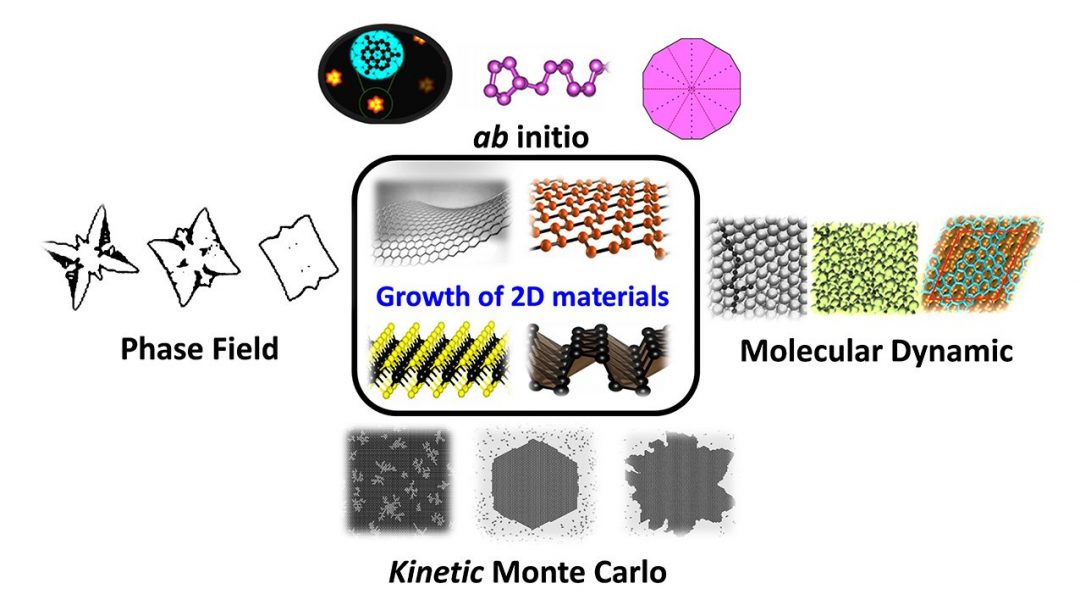Graphene opened the door to a brand new scientific arena: two-dimensional (2D) materials. Over the last decade, the 2D family has been growing rapidly, and more and more members like silicene, phosphorene, or transition metal dichalcogenides, have been synthesized and fabricated. These 2D materials have been found to possess many fascinating properties that are promising for various potential applications, such as in electronics, optoelectronics, sensor, energy storage, catalysis, biology, etc. To realize these promising applications, controllable mass production of 2D materials with high-quality and large-area is a prerequisite.
In addition to the great effort made experimentally, remarkable progresses have also been made in use of various computational methods for understanding the growth mechanism of 2D materials. Computational studies have been employed to not only describe the atomic behaviors during 2D materials growth, but they also provide a detailed understanding of their growth mechanisms under complex conditions. Beyond that they are also able to predict new 2D materials and their possible growth routes.
A review article by Yong-Wei Zhang (Institute of High Performance Computing, A*STAR, Singapore) and colleagues provides an overview of several state-of-the-art computational studies on 2D materials growth. First, the current status of 2D materials family and major growth methods are discussed. Then, four computational methods, that is, ab initio, molecular dynamics, kinetic Monte Carlo, and phase filed methods commonly used in the study of 2D materials growth are introduced, focusing on their advantages and limitations in terms of the simulation scales and accuracy. Subsequently, many case studies are presented to understand the growth behaviors of four 2D materials, i.e., graphene, h-BN, MoS2, and phosphorene.
These case studies demonstrate that computational explorations are able to not only reveal insights but to also give important guidance for the growth of 2D materials.

















